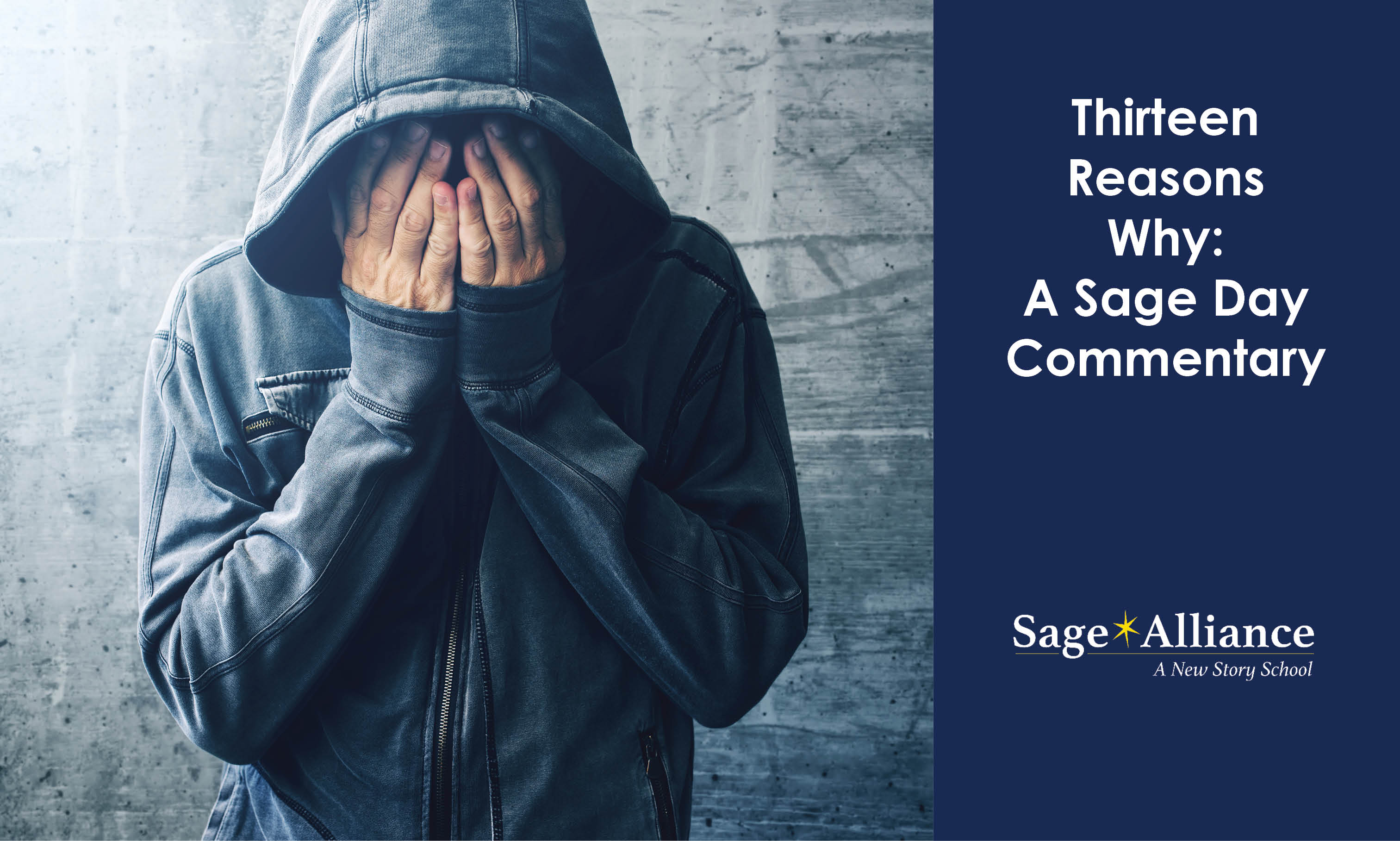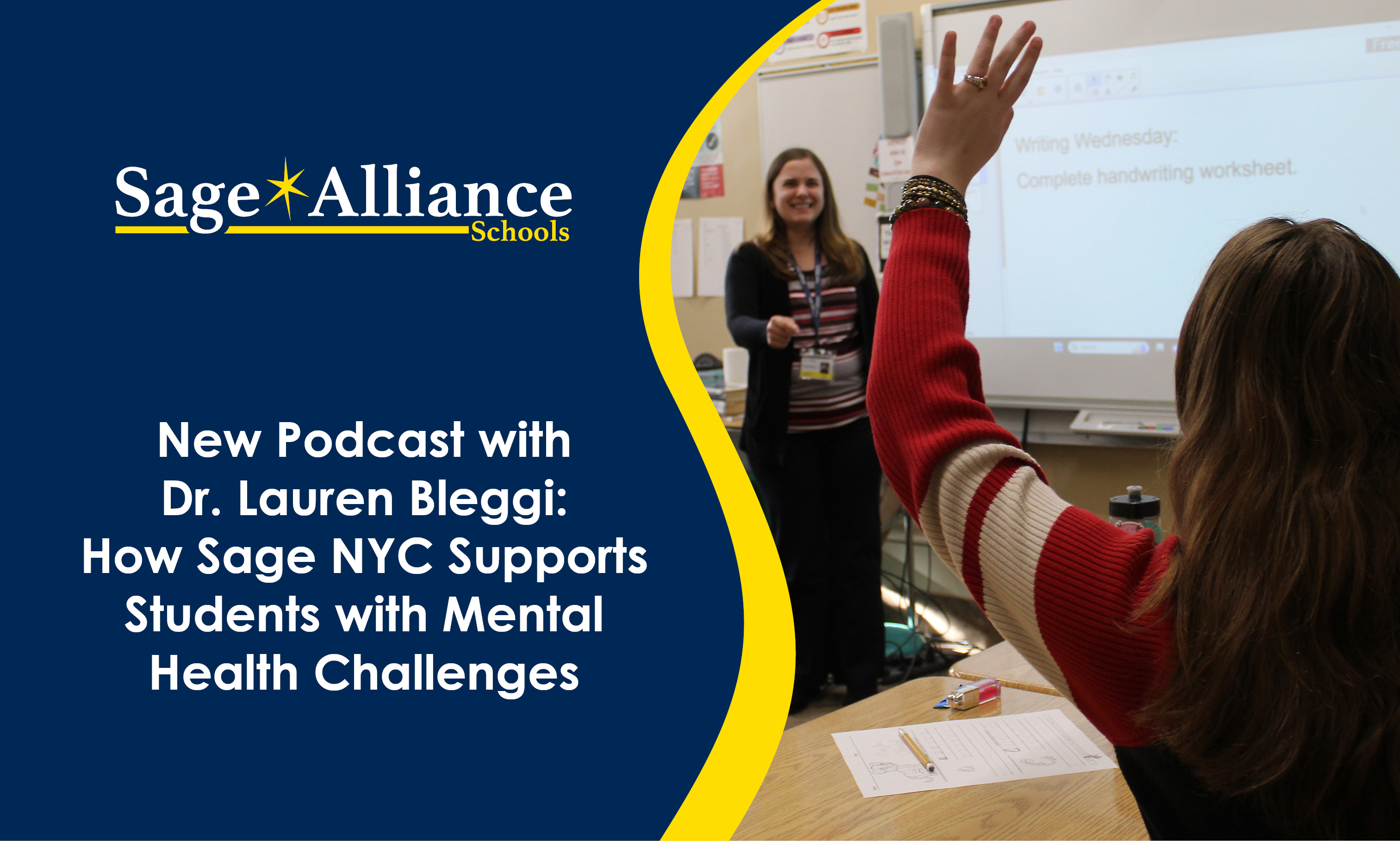Thirteen Reasons Why: A Sage Day Commentary
Posted: June 13, 2017 | Written By: Holly Ference | Category:

Many have seen the Netflix series “Thirteen Reasons Why” or have read the book written by Jay Asher. This is the tragic story of Hannah who leaves audio cassette tapes to those whose words and actions affect her, contributing to the decision to take her life. It has been suggested that this topic glorifies suicide, but the important message is that everyone needs someone they can confide it. Suicide has been so stigmatized in our society, that this is a topic that is never brought up, even when a concern exists. Anyone who see themselves as Hannah who has been deeply affected and hurt by others must absolutely talk to someone about their feelings. Many people are embarrassed to admit they are depressed, hopeless and helpless, believing that life is not worth living. It is important that if a student has been told or suspects that someone is in danger, an adult must be told to provide proper assistance and notification.
Suicide is the second leading cause of death for ages 10-24 (2015 CDC WISQARS). More teenagers die from suicide than from cancer, heart disease, AIDS, birth defects, stroke, pneumonia and chronic lung disease combined. Every day in the United States, there is an average of over 5,200 attempts by young people in grades 7-12.
Why does a child think that ending one’s life is seen as the only way of ending the pain? Why does he or she feel there was no one to talk to about what was troubling them. Here is a suggested list of signs to watch for in your child. Sadly, some young people do not exhibit any behaviors and may appear coping. Keeping the lines of communication open to you and your child promotes healthy behaviors. Being aware of signs of change in behaviors will help alert you to suicidal thoughts. This list is not to be considered the only signs of suicidal behaviors.
-
Depressed mood defined by helplessness and hopelessness
-
Substance abuse
-
Frequent episodes of running away or being incarcerated
-
Family loss or instability, significant problems with one or both parents
-
Difficulties in coming to terms with sexual orientation
-
Expressions of suicidal thoughts, or talk of death or the afterlife during moments of sadness or boredom
-
Giving away of personal items
-
Withdrawal from friends and family
-
Writing or drawing of dark thoughts/images
-
Loss of interest in or enjoying activities that once were pleasurable
-
Unplanned pregnancy
-
Impulsive and/or aggressive behaviors
-
Self-loathing
-
Repeated self-harm
Suicide attempts and threats should always be taken seriously. Never ignore a suicide threat or cry for help by negating or downplaying what someone tells you. Listening to a nonjudgmental individual may alleviate the distress of a person desiring to harm oneself. If you are concerned about someone’s safety, call 911 immediately. Never leave a suicidal person alone for anytime until a professional is contacted. It is better to err on the side of caution can save someone’s life. It is not unusual for a student’s friend to be aware of suicidal thoughts but are afraid to inform anyone for fear that they a friend will be angry with them. We here at Sage Day encourage our students to be first responders if they become aware of someone’s suicidal thoughts and to share the information to save a life.
Sage Day, with their skilled and licensed psychotherapists , compassionate teaching staff and caring administrators provide a safe environment for students to share their feelings and for staff to monitor risks associated with suicidal thoughts and behaviors. We encourage our students to talk about their feelings, not to act on them. Sage Day also provides opportunities for students to learn that words and actions deeply wound, teaching respect and acceptance through modeling behavior and discussions.
Deeply affected by the Netflix series, the Sage Day Boonton campus Student Council with adviser, psychotherapist Ms. Adelsberg, acted out “Nails in the Fence” in each history classroom to demonstrate the depth of hurt that words can make. Students took turns hammering nails into a board and then removing the nails. The following story was read to the students:
Nails In The Fence
Author Unknown
There once was a little boy who had a bad temper. His father gave him a bag of nails and told him that every time he lost his temper, he must hammer a nail into the back of the fence.
The first day the boy had driven 37 nails into the fence. Over the next few weeks, as he learned to control his anger, the number of nails hammered daily gradually dwindled down. He discovered it was easier to hold his temper than to drive those nails into the fence.
Finally the day came when the boy didn’t lose his temper at all. He told his father about it and the father suggested that the boy now pull out one nail for each day that he was able to hold his temper. The days passed and the young boy was finally able to tell his father that all the nails were gone.
The father took his son by the hand and led him to the fence. He said, “You have done well, my son, but look at the holes in the fence. The fence will never be the same. When you say things in anger, they leave a scar just like this one. You can put a knife in a man and draw it out. It won’t matter how many times you say I’m sorry, the wound is still there.”
The little boy then understood how powerful his words were. He looked up at his father and said, “I hope you can forgive me father for the holes I put in you.”
“Of course I can,” said the father.
Where can I learn more about Suicide Behaviors and Suicide Prevention?
If you or someone you know is thinking about suicide, contact the National Suicide Prevention Lifeline at
1-800-273-8255
http://www.suicidepreventionlifeline.org/
Suicide Awareness Voices of Education
http://www.save.org/
Suicide Prevention Resource Center
http://www.sprc.org/
American Association of Suicidology
http://www.suicidology.org/
Want to be notified of new articles and resources from Sage Alliance? Click here to submit your email and opt into our newsletter.









